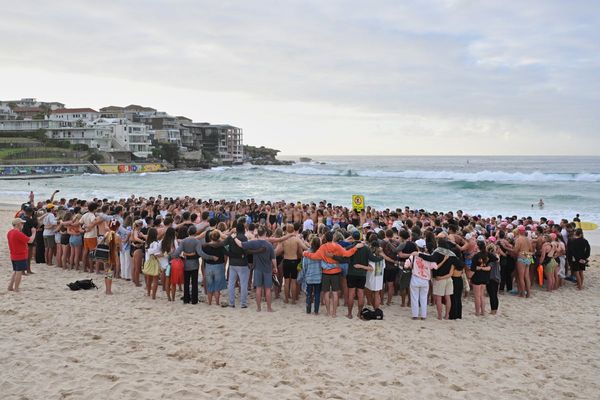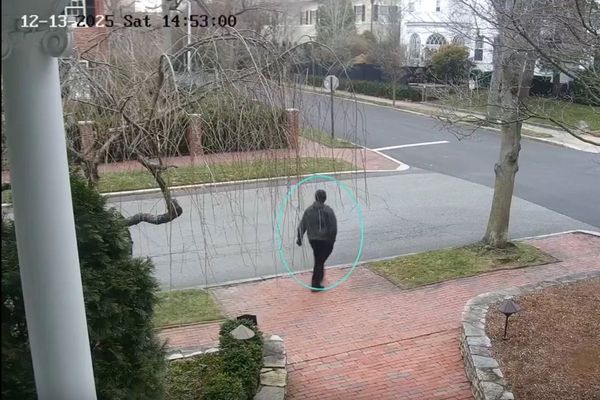
Here she is on the sand, barefoot in the lapping waves, wearing cropped skinny jeans and shoulder-robing a blanket. And here she is in a cafe, the sleeves of her utility overshirt pushed up as she reaches for her flat white with its photogenic foam-art. Here she is in the mountains, wearing a beanie hat that perfectly offsets hair blow-dried into soft waves. Oh, and look, here’s a still-life shot of her weekend-away capsule wardrobe laid out on hardwood floors. She’s taking high-heeled hiking boots. But then, she is a Barbie doll.
Socality Barbie, the newest social-media sensation, is on a mission to take down Instagram from the inside. The account is the brainchild of an anonymous wedding photographer in Oregon, who dresses a Barbie doll in mini-hipster outfits and posts Instagram shots of doll-sized hikes (always sunny, lots of photogenic light shafts through the trees), coffee dates (whitewashed wooden tables and a calm, mindful atmosphere) and boyfriends (check shirt, facial hair).

It’s not exactly satire – I don’t think you can really satirise Instagram, that would be like satirising kittens – but Socality Barbie skewers something about how plastic Instagram has become. She is the Rosa Parks of a society oppressed by thigh gaps and tyrannised by heavily filtered brunches. She is a taking a brave stand against – OK, poking fun at – the disproportionate power and influence of Instagram, which has overtaken the Farrow & Ball paint chart as the sacred text we must live by.
Let me get one thing straight: I love Instagram. I am addicted. Sometimes I wake up in the night and, half asleep, reach for my phone and start scrolling through my feed, which at that hour is Lily-Rose Depp in novelty socks, people I vaguely know in New York taking overlit selfies in bars and insomniacs on a 3am camera-roll jag posting throwback photos with mawkish captions. And I love it. So I am absolutely not about to declare Instagram over. Anyway, that would be idiotic: in 2012, Facebook paid $1bn to buy it; it is now valued at $35bn. And in fashion, Instagram is everything. It has catwalk shows in real time, street style from all over the world, plus you get to see every time someone you know buys a new coat. What more could I possibly want?
But what Instagram isn’t any more is cutting edge. Instead of being hip, it is a world of commodified hipsterdom. All pigeon-toed loafers on pretty tiled floors and nail art on a hand holding a street-truck burger. It is a guilty pleasure, a cosy comforting world where everyone dresses really well and is also, like, super nice. It is a bit like watching reality TV, in fact. You get to watch attractive people living their lives, at a level of apparent intimacy that makes it compelling. Theoretically, Instagram is more high-minded than reality TV, because it shows you a kaleidoscope of viewpoints from all over the world. The trouble is they all look the same.

Fashion has embraced Instagram to a greater extrent than any other industry. Instagram is now the premier platform for fashion industry announcements (Alexander Wang announced his H&M collaboration on Instagram) and the arena in which designer brands compete most vigorously for airtime. But in the battle to be Most Instagrammable, everyone in fashion is now falling over themselves to look exactly like every other fashion person on Instagram – because however ironic your captions and however sophisticated your eye, social media is, when push comes to shove, a popularity contest staged as a free-for-all pitched battle. It’s about the likes, not the pictures. It’s a numbers game.
The creator of Socality Barbie told Wired that the idea came to her because “people were all taking the same pictures in the same places and using the same captions.” She says: “I couldn’t tell any of their pictures apart so I thought, ‘What better way to make my point than with a mass-produced doll?’” Two weeks ago, Socality Barbie had 7,000 followers; she now has more than a million. “I think it’s because she’s so relatable,” says the photographer. “Either your Instagram looks just like hers or you know at least one person whose Instagram does.”







